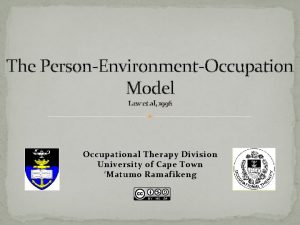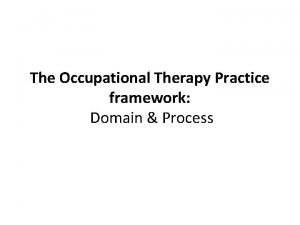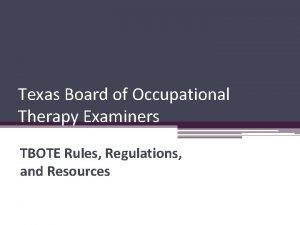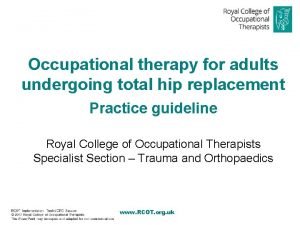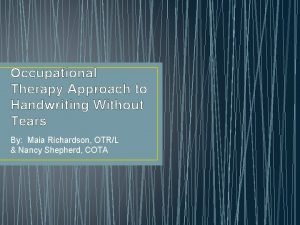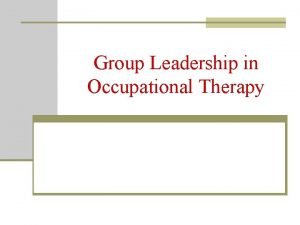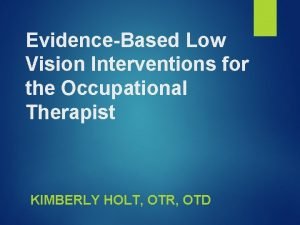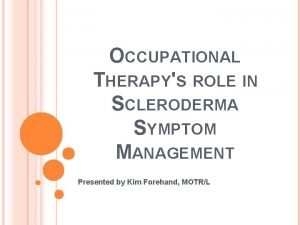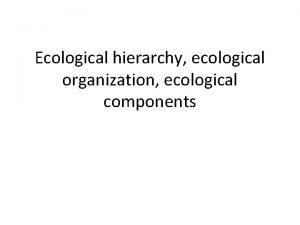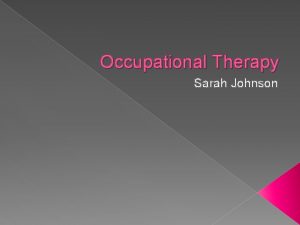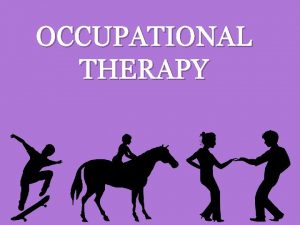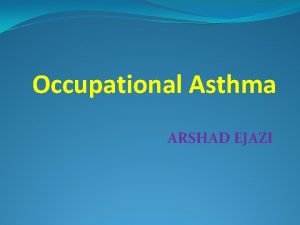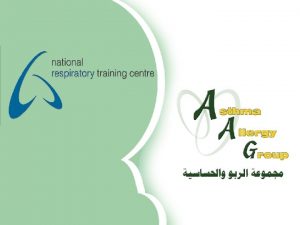Chapter 38 Ecological Models in Occupational Therapy Catana
















- Slides: 16

Chapter 38 Ecological Models in Occupational Therapy Catana E. Brown Copyright © 2014 Wolters Kluwer Health | Lippincott Williams & Wilkins

Learning Objectives After reading this chapter, you will be able to: 1. Explain how an understanding of the environment is essential to understanding occupational performance. 2. Describe the ecological models and their concepts. 3. Describe and distinguish the five intervention strategies: (1) establish/restore, (2) adapt/modify, (3) alter, (4) prevent, and (5) create. Copyright © 2014 Wolters Kluwer Health | Lippincott Williams & Wilkins

Three Ecological Models • Emphasize the importance of considering the environment in occupational therapy practice: – The Ecology of Human Performance model (EHP); – The Person Environment Occupational Performance model (PEOP); and – The Person Environment Occupation model (PEO) Copyright © 2014 Wolters Kluwer Health | Lippincott Williams & Wilkins

Intellectual Heritage • The ecological models were: – built on social science theory, earlier occupational therapy models, and the disability movement; – based on the idea of goodness of fit; and – influenced by civil rights movements that arose from disability groups Copyright © 2014 Wolters Kluwer Health | Lippincott Williams & Wilkins

Definitions Person • EHP, PEO, and PEOP have similar definitions of the person: a unique and holistic view of the person that acknowledges the mind, body, and spirit. • Variables associated with the person include: – Values and interests; – Skills and abilities; and – Life experience Copyright © 2014 Wolters Kluwer Health | Lippincott Williams & Wilkins

Definitions (Continued) Environment • The environment is also described similarly across the three models. • The environment is where occupational performance takes place and consists of: – Physical components – Cultural components – Social components Copyright © 2014 Wolters Kluwer Health | Lippincott Williams & Wilkins

Definitions (Continued) Occupation/Task • The biggest difference in the three models is found in the concepts related to occupations or tasks. • PEO and PEOP use the term occupation, and describe a series of nested concepts that make up occupations. Copyright © 2014 Wolters Kluwer Health | Lippincott Williams & Wilkins

Definitions (Continued) Occupation/Task • EHP uses the term task because a primary purpose of the model is to facilitate interdisciplinary collaboration. – The EHP model also describes five intervention strategies: Establish/Restore, Adapt/Modify, Alter, Prevent, Create Copyright © 2014 Wolters Kluwer Health | Lippincott Williams & Wilkins

Definitions (Continued) Occupational Performance • The outcome that is associated with the confluence of the person, environment, and occupation factors. • The degree to which occupational performance is possible depends on the goodness of fit of these factors. Copyright © 2014 Wolters Kluwer Health | Lippincott Williams & Wilkins

Person Environment Occupation Model Copyright © 2014 Wolters Kluwer Health | Lippincott Williams & Wilkins

Person Environment Occupation Performance Model Copyright © 2014 Wolters Kluwer Health | Lippincott Williams & Wilkins

Ecology of Human Performance Model Copyright © 2014 Wolters Kluwer Health | Lippincott Williams & Wilkins

Assumptions of the Ecological Models • The relationships between people, environments, and occupations are dynamic and unique • The environment is a major factor in the prediction of successful and satisfying occupational performance • Rather than exclusively using interventions that change the person, it is often more efficient and effective to change the environment or find a person-environment match Copyright © 2014 Wolters Kluwer Health | Lippincott Williams & Wilkins

Assumptions of the Ecological Model (Continued) • Occupational performance is determined by the confluence of person, environment, and occupation factors • OTs practice begins by identifying what occupations the person wants or needs to perform • OT practice involves promoting self-determination and the inclusion of people with disabilities in all environments Copyright © 2014 Wolters Kluwer Health | Lippincott Williams & Wilkins

Application to Practice • The ecological models provide a framework for thinking about OT practice but do not delineate specific assessments or techniques. • Using an ecological model requires OTs to consider the environment as extensively as they consider the person. • The process begins by identifying what the person wants or needs to do in his or her life. – The client and OT collaborate throughout the OT process. Copyright © 2014 Wolters Kluwer Health | Lippincott Williams & Wilkins

Evidence Supporting the Ecological Models • Studies indicating a relationship between environment and occupational performance provide support for the ecological models. – This growing body of research describes the impact of the environment on occupational performance. • Research has also supported the efficacy of OT intervention using a ecological approach. Copyright © 2014 Wolters Kluwer Health | Lippincott Williams & Wilkins
 Bioness bits cost
Bioness bits cost Huron creek
Huron creek Cleveland state occupational therapy
Cleveland state occupational therapy Peo framework occupational therapy
Peo framework occupational therapy Occupational therapy practice framework domain and process
Occupational therapy practice framework domain and process Alert program occupational therapy
Alert program occupational therapy Texas board of occupational therapy
Texas board of occupational therapy Backward chaining occupational therapy
Backward chaining occupational therapy Occupational therapy and environmental sustainability
Occupational therapy and environmental sustainability Occupational therapy intervention plan for hip arthroplasty
Occupational therapy intervention plan for hip arthroplasty Handwriting without tears
Handwriting without tears Group therapy leadership styles
Group therapy leadership styles Ls&s low vision
Ls&s low vision Ot process
Ot process Occupational therapy day
Occupational therapy day Scleroderma occupational therapy
Scleroderma occupational therapy Mat man occupational therapy
Mat man occupational therapy



